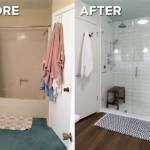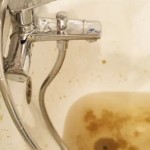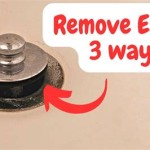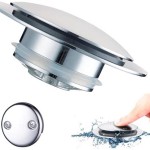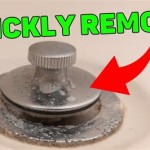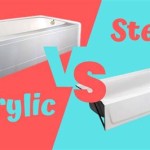Why Is My Bathtub Not Draining Faster Than Normal?
A slow-draining bathtub is a common household plumbing problem that can range from a minor nuisance to a significant indicator of a larger issue within the drainage system. Understanding the potential causes behind this slow drainage is crucial for both addressing the immediate problem and preventing future occurrences. Identifying the root of the issue allows for appropriate and effective remediation, saving time, money, and potential damage to the plumbing infrastructure.
Several factors can contribute to a bathtub's drainage slowing down. These factors vary in complexity and location within the drainage system, which dictates the difficulty and expertise required for resolution. A systematic approach to diagnosis involves considering the most common culprits first and progressively investigating more complex possibilities.
Initial assessment should always include examining the visible components of the drainage system, such as the drain stopper and surrounding area. Any visible debris, such as hair, soap scum, or other foreign objects, should be removed immediately. This simple step can often resolve the problem without requiring more extensive intervention. However, if the slow drainage persists, further investigation is necessary.
Hair and Soap Scum Accumulation
One of the most frequent causes of slow-draining bathtubs is the accumulation of hair and soap scum within the drainpipe. Hair, due to its fibrous nature, easily tangles and forms clumps that impede water flow. Soap scum, a byproduct of soap reacting with hard water minerals, adheres to the interior of the drainpipe, further restricting the passage of water. The combination of these substances creates a sticky, dense mass that gradually constricts the drainpipe, leading to increasingly slower drainage.
The location of this accumulation is typically within the immediate vicinity of the drain opening or within the P-trap, a curved section of pipe designed to trap debris and prevent sewer gases from entering the home. While the P-trap serves a vital function, it also presents an ideal environment for the build-up of hair and soap scum. The curvature of the P-trap provides a natural collection point, allowing these substances to accumulate until they significantly impede water flow.
Addressing hair and soap scum accumulation can be achieved through several methods. A simple approach involves using a tool designed to grab and remove hair from the drain. These tools, often consisting of a long, flexible plastic strip with barbs or hooks along its length, can be inserted into the drainpipe to retrieve accumulated hair. Regular use of these tools can prevent significant build-up and maintain proper drainage.
Another method involves using chemical drain cleaners. These cleaners contain caustic substances that dissolve hair and soap scum. However, caution must be exercised when using chemical drain cleaners, as they can be corrosive and potentially damage pipes, especially older pipes made of materials like cast iron. It is essential to follow the manufacturer's instructions carefully and to avoid using these products excessively. Furthermore, the use of chemical drain cleaners should be avoided entirely if there is a complete blockage, as the chemicals can pool and damage the pipes without effectively dissolving the blockage.
For a more environmentally friendly approach, a mixture of baking soda and vinegar can be used to dissolve hair and soap scum. Pouring a cup of baking soda followed by a cup of vinegar into the drain creates a chemical reaction that produces carbon dioxide, which helps to break down the accumulation. After allowing the mixture to sit for approximately 30 minutes, flushing the drain with hot water can help to clear the debris.
Preventative measures are also crucial in minimizing hair and soap scum accumulation. Using a drain strainer or screen can prevent hair and other debris from entering the drainpipe. Regularly cleaning the drain with a baking soda and vinegar mixture can also help to prevent the build-up of these substances. Switching to liquid soap instead of bar soap can also reduce the formation of soap scum, as liquid soaps tend to contain fewer ingredients that contribute to its creation.
Partial or Complete Blockage Further Down the Drain Line
While hair and soap scum are common culprits, a slow-draining bathtub can also be caused by a partial or complete blockage further down the drain line. This blockage can consist of a wider range of materials, including larger debris, mineral deposits, or even tree roots that have intruded into the sewer line. Identifying and addressing these types of blockages often require more specialized tools and expertise.
The location of the blockage is a critical factor in determining the appropriate course of action. Blockages located closer to the bathtub drain may be accessible using tools like a plumber's snake, a flexible metal cable that can be inserted into the drainpipe to break up or retrieve the blockage. Blockages located further down the drain line, particularly in the main sewer line, may require more advanced techniques, such as hydro jetting, which involves using high-pressure water to blast away the blockage.
Mineral deposits, particularly in areas with hard water, can gradually accumulate on the interior of the drainpipe, narrowing the passage and restricting water flow. These deposits, primarily composed of calcium and magnesium, can harden over time, making them difficult to remove. Chemical solutions designed to dissolve mineral deposits can be used, but caution is necessary to avoid damaging the pipes. In some cases, mechanical methods, such as using a plumber's snake with a specialized head designed to scrape away mineral deposits, may be required.
Tree roots are a less common but potentially serious cause of drain line blockages. Tree roots are attracted to the moisture and nutrients found within sewer lines. If a sewer line has a crack or other defect, tree roots can penetrate the pipe and gradually expand, eventually causing a complete blockage. Addressing tree root intrusion often requires excavation to repair or replace the damaged section of the sewer line. In some cases, chemical root killers can be used to kill the roots, but these chemicals must be used with caution to avoid damaging the surrounding environment.
Diagnosing a blockage further down the drain line often involves observing the drainage behavior of other fixtures in the home. If multiple fixtures, such as toilets and sinks, are draining slowly, it is likely that the blockage is located in the main sewer line. In this case, it is advisable to consult with a qualified plumber to diagnose and resolve the issue.
Ventilation Issues Within the Plumbing System
An often-overlooked cause of slow-draining bathtubs is a problem with the plumbing system's ventilation. Plumbing systems rely on a network of vents to allow air to enter and exit the drainpipes. These vents prevent a vacuum from forming, which can impede water flow. If the vents are blocked or obstructed, the resulting pressure differential can significantly slow down the drainage process.
The primary function of plumbing vents is to equalize the air pressure inside the drainpipes with the air pressure outside. When water flows down a drainpipe, it creates a partial vacuum. If the vent is clear, air can enter the drainpipe to relieve the vacuum, allowing the water to flow freely. However, if the vent is blocked, the vacuum intensifies, creating resistance to the water flow and slowing down the drainage.
Common causes of vent blockages include bird nests, leaves, snow, and ice. These materials can accumulate in the vent opening, preventing air from entering or exiting the drainpipe. In some cases, the vent pipe may be improperly sized or installed, which can also contribute to ventilation problems.
Diagnosing a ventilation issue often involves observing the behavior of the water as it drains. If the water gurgles or bubbles as it drains, it is a strong indication that the vent may be blocked. Another sign of a ventilation problem is that the toilet may flush weakly or slowly. These symptoms suggest that the plumbing system is not properly ventilated, which is affecting the drainage of multiple fixtures.
Addressing a vent blockage typically involves clearing the obstruction from the vent opening. This may require accessing the vent pipe on the roof, which can be dangerous and should only be attempted by someone comfortable working at heights. Using a garden hose or plumber's snake can help to dislodge the blockage. In some cases, it may be necessary to consult with a qualified plumber to inspect and repair the vent system.
Preventative measures include regularly inspecting the vent openings to ensure they are free of debris. Installing a vent screen can also help to prevent birds and other animals from nesting in the vent pipe. Ensuring that the vent pipe is properly sized and installed can also help to prevent ventilation problems.
In summary, a slow-draining bathtub can be caused by a variety of factors, ranging from simple hair and soap scum accumulation to more complex issues such as blockages further down the drain line or ventilation problems within the plumbing system. A systematic approach to diagnosis, starting with the most common culprits and progressively investigating more complex possibilities, is essential for identifying and resolving the issue effectively. Addressing the root cause of the problem not only restores proper drainage but also helps to prevent future occurrences and potential damage to the plumbing infrastructure.

Bathtub Won T Drain Quick Solutions To A Common Problem

5 Easy Ways To Unclog Bathtub Drain

What To Do If Your Bath Is Taking Longer Drain

How To Clear A Clogged Bathtub Drain

Bathtub Won T Drain Quick Solutions To A Common Problem

Unclog A Bathtub Drain With Standing Water Tub Won T

6 Reasons Why Your Bathtub Doesn T Hold Water Marco Plumbing Durham Greater Toronto

Why Is My Bathtub Not Draining Causes Fixes Checkatrade

How You Can Fix A Slow Draining Drain On Your Own Ashton Plumbing Heating Air Conditioning

How To Unclog A Bathtub Drain Without Chemicals
Related Posts

